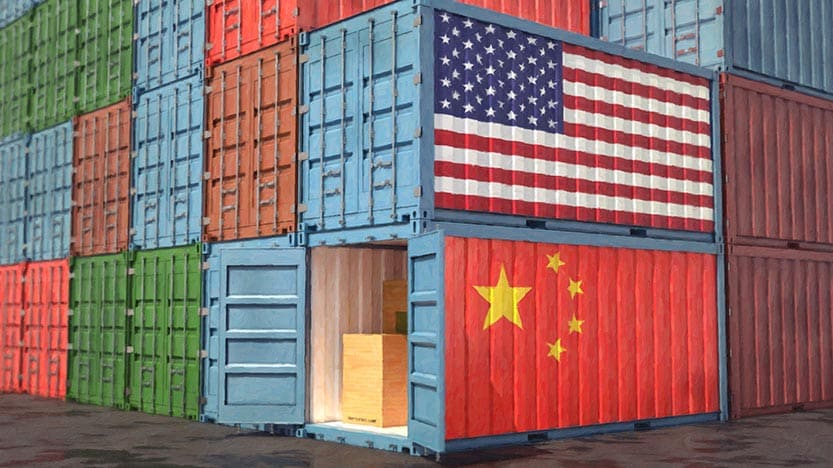Shipping goods from the United States to China involves various factors influencing the overall cost. Understanding these factors is crucial for businesses and individuals engaged in international trade.
In this article, we will explore the key elements that affect the shipping cost to China, providing valuable insights for importers and exporters alike.
Distance and Route
The distance between the United States and China plays a significant role in determining shipping costs. Naturally, longer distances increase expenses due to increased fuel consumption, extended travel time, and potential transshipment costs. Additionally, the chosen shipping route can impact costs. Direct routes are generally more cost-effective than routes with multiple transshipments or stopovers. It is essential to carefully consider the distance and route to optimize cost efficiency.
Shipping Method
The shipping method selected has a considerable influence on shipping costs. The two primary methods of shipping goods to China from the United States are air freight and ocean freight. At the same time, air freight offers quicker delivery times but is significantly more expensive than ocean freight.
Ocean freight, on the other hand, is more cost-effective but has a longer transit time. The choice of shipping method will depend on the urgency of delivery and the value of the goods being shipped. It is crucial to weigh the advantages and disadvantages of each method to make an informed decision.
Get Quote and Save UPTO 70% on your next shipping
Weight and Volume
The weight and volume of the shipment are critical factors that affect shipping costs. Generally, the heavier and larger the shipment, the higher the shipping expenses. Freight charges are often calculated based on the actual weight (gross weight) or the volumetric weight (dimensional weight), whichever is higher.
The Volumetric weight is calculated by multiplying the shipment’s length, width, and height and dividing the result by a volumetric factor. It is essential to accurately measure and declare the weight and dimensions of the cargo to avoid additional charges or rejections at customs. Properly optimizing the weight and volume of the shipment can lead to cost savings.
Freight Class and Packaging
Freight class is another aspect that can impact shipping costs. The National Motor Freight Traffic Association (NMFTA) assigns freight classes based on the shipped commodity and density. Higher freight classes usually result in higher shipping rates. Proper packaging is also crucial to prevent damage during transit.
Inadequate packaging can lead to additional costs if goods are damaged or require re-packaging. Understanding the specific packaging requirements for shipping to China and ensuring compliance is important. By optimizing freight class and adopting appropriate packaging practices, costs can be minimized.
Customs Duties and Taxes
When shipping goods from the United States to China, customs duties and taxes imposed by both countries must be considered. These charges are typically based on the value of the goods being imported and can significantly affect the overall cost of shipping.
Importers should familiarize themselves with the customs regulations of both countries, including any applicable duty rates, taxes, and import restrictions, to accurately estimate the total cost of shipping. Working with customs experts or freight forwarders specializing in the U.S.-China trade route can provide valuable guidance on navigating these regulations and optimizing costs.
Documentation and Compliance
Ensuring proper documentation and compliance with regulations is crucial to avoid delays and additional costs. Shipping to China requires various documents, such as commercial invoices, packing lists, bills of lading, and certificates of origin. Any errors or missing documents can lead to customs clearance delays, storage charges, or even confiscation of goods.
Working with experienced freight forwarders or customs brokers can help navigate these complexities and minimize the risk of additional costs. Investing time and resources in thorough documentation and compliance processes is essential to ensure smooth and cost-effective shipping operations.
Seasonal Demand and Peak Periods
Seasonal demand and peak periods can significantly affect shipping costs. During peak seasons, such as the holiday season or major events like Chinese New Year, freight rates tend to increase due to high demand. Limited vessel space and increased congestion at ports can lead to higher costs and longer transit times.
Planning shipments outside peak periods or booking in advance can help mitigate these cost fluctuations. By being aware of seasonal patterns and considering the timing of shipments, businesses can better manage costs and avoid unnecessary expenses.
Get Quote and Save UPTO 70% on your next shipping
Additional Services and Insurance
Additional services, such as warehousing, cargo insurance, and customs clearance assistance, can contribute to the overall shipping cost. Warehousing costs may arise if the goods need to be stored temporarily before or after shipping. Cargo insurance protects against loss, damage, or theft during transit.
Depending on the nature and value of the goods, it may be wise to consider purchasing adequate insurance coverage to mitigate potential risks. Customs clearance assistance can ensure smooth and efficient customs procedures, reducing the likelihood of delays and associated costs. Understanding the need for additional services and their impact on shipping costs is crucial for comprehensive cost management.
Final Thoughts
When shipping goods from the United States to China, numerous factors affect the overall cost. Understanding these factors and their implications is crucial for businesses and individuals involved in international trade. By considering the distance and route, shipping method, weight and volume, freight class and packaging, customs duties and taxes, documentation and compliance, seasonal demand and peak periods, and additional services and insurance, one can better estimate and manage the shipping cost to China.
Importers and exporters should carefully evaluate these factors and seek professional advice when necessary to ensure smooth and cost-effective shipping operations.

I’m Tammy Waller, a supply chain and logistics specialist with over 10 years of expertise. I’ve been an author and SFL employee for over 10 years.
As an author, I’ve been able to teach others. I love guiding users through supply chain and logistics operations.
I have substantial experience managing logistics operations, supply chain management, transportation, inventory management, and warehousing in shipping-moving and logistic services. I’ve worked on many worldwide logistics and supply chain projects, honing my abilities in negotiating rates, scheduling shipments, and managing vendors.



